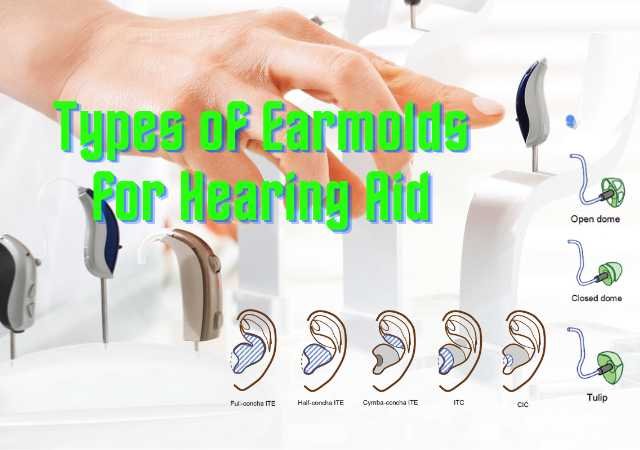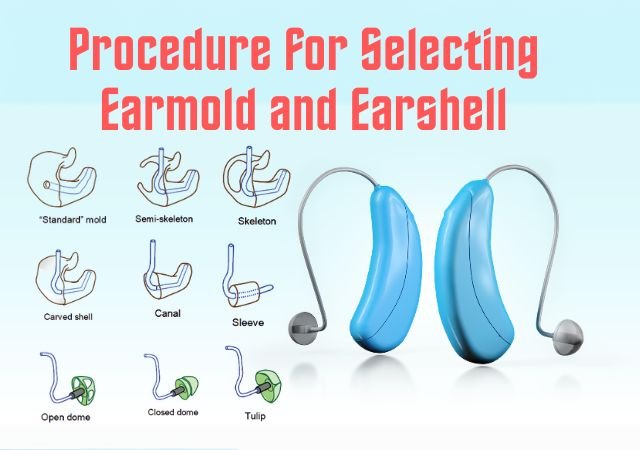Auditory Neuropathy Spectrum Disorder (ANSD) Symptoms and Treatment: Auditory neuropathy/Auditory dyssynchrony or Auditory Neuropathy Spectrum Disorder (ANSD) is a form of hearing impairment in which neural transmission in the peripheral auditory system is impaired and for which there is often normal cochlear outer hair cell function and present otoacoustic emissions (Starr et al., 2000).
The strict definition of Auditory Neuropathy Spectrum Disorder (ANSD) is the presence of otoacoustic emissions (a measurement of outer hair cell function) in the complete absence of the ABR. In addition, acoustic reflexes are elevated or absent in patients with Auditory Neuropathy Spectrum Disorder (ANSD), and they fail to have efferent suppression of their otoacoustic emissions.
Auditory Neuropathy Spectrum Disorder (ANSD) Symptoms
- Individuals with Auditory Neuropathy Spectrum Disorder (ANSD) may experience sensorineural hearing impairment ranging from mild to profound.
- While most cases of ANSD affect both ears (binaural), there are instances of unilateral Auditory Neuropathy Spectrum Disorder (ANSD) as well.
- Auditory Neuropathy Spectrum Disorder (ANSD) patients typically face challenges in speech recognition when exposed to noise, although their performance in quiet environments may or may not be affected.
- Moreover, individuals with Auditory Neuropathy Spectrum Disorder (ANSD) often exhibit impaired temporal resolution based on test results.
Site of Origin for Auditory Neuropathy Spectrum Disorder (ANSD)
Auditory Neuropathy Spectrum Disorder (ANSD) originates between the cochlea and the brainstem. Potential causes include harm to the synaptic junctions of inner hair cells and/or the dendrites of the auditory nerve that receive neurotransmitters from inner hair cells, harm to the spiral ganglion, and/or damage to the axons of cranial nerve VIII. When there is damage to the axons of the auditory nerve, its effects often extend to parts of the brainstem. Neuronal injury sites may occur in the myelin sheath, the axon, or both, as well as in the cell body.
Causes of Auditory Neuropathy Spectrum Disorder (ANSD)
The range of conditions leading to Auditory Neuropathy Spectrum Disorder (ANSD) and the absence of ABRs is extensive, encompassing factors such as
- low birth weight
- prematurity
- viral diseases
- seizures
- anoxia
- hypoxia
- syndromes like CMT, Ehlers–Danlos, and Stevens–Johnson.
Auditory Neuropathy Spectrum Disorder (ANSD) can also manifest spontaneously without a known pathological cause.
- While hyperbilirubinemia (HB) or jaundice is often associated with Auditory Neuropathy Spectrum Disorder (ANSD), it’s essential to recognize that this disorder primarily affects the central auditory system.
- The damage resulting from this pathological process initially targets brainstem nuclei, specifically the CN (cochlear nucleus), rather than the auditory nerve itself (Dublin, 1985).
- The damage may gradually extend to the auditory nerve’s root entry zone into the CN and then to the auditory nerve, but the conventional understanding of ANSD involving primarily auditory nerve damage does not apply to cases related to HB. In HB, the damage initiates in the brainstem and progresses downward to affect the auditory nerve.
Assessment and Diagnosis of Auditory Neuropathy Spectrum Disorder (ANSD)
Equipment and Protocol used in the assessment of Auditory Neuropathy Spectrum Disorder
The equipment and protocol used in a newborn hearing screening program is the need to identify babies who are DHH because of auditory neuropathy spectrum disorder (ANSD). Such babies are a challenge to identify in some newborn hearing screening programs because they have normal or near-normal OAEs but an absent/abnormal auditory brainstem response (ABR). Thus, a program that uses only OAE for screening would miss such babies.
Although it does occur in well-baby nurseries, most babies with ANSD have spent time in the NICU. For this reason, the JCIH (2007) recommends ABR technology as the only appropriate screening technique for use in the NICU. Berlin et al. (2010) provide additional information about the diagnosis and management of children with ANSD.
Auditory Brainstem Response (ABR) in Auditory Neuropathy Spectrum Disorder (ANSD)
The ABR reveals the underlying physiology of Auditory Neuropathy Spectrum Disorder (ANSD) through waveforms lacking measurable aspects such as amplitude and latency in Waves I, III, and V, making replication impossible. Despite this, a cochlear microphonic should be evident in the ABRs because the cochlear function may remain normal or near-normal in ANSD. The cochlear microphonic, primarily originating from outer hair cells in the cochlea, precedes Wave I and aligns with the presented stimulus phase.
To identify the cochlear microphonic in suspected ANSD cases during ABR acquisition, it is crucial to obtain distinct replicated waveforms using single-polarity condensation and rarefaction click stimuli. The cochlear microphonic typically initiates within 1 ms of stimulus presentation, manifesting as a downward shift from baseline with rarefaction click stimuli and an upward shift with condensation click stimuli. A lack of the cochlear microphonic in ABR tracings suggests potential instrumental or clinician errors, such as failure to deliver the stimulus to the patient or using alternating polarity clicks. Consequently, it is imperative to verify equipment and stimulus protocols to ensure proper stimulus delivery if all ABR waveform aspects are absent.
Auditory Neuropathy Spectrum Disorder (ANSD) Treatment
Hearing aids and cochlear implants have been employed for individuals with Auditory Neuropathy Spectrum Disorder (ANSD), alongside crucial early intervention initiatives targeting the development of speech, language, and communication. Generally, ANSD patients may not derive significant benefits from traditional amplification; however, it is advisable to explore the use of hearing aids as there are instances where ANSD patients do experience positive outcomes with them. Thankfully, a considerable number of individuals with ANSD have found success through cochlear implantation.
Cochlear Implantation in Auditory Neuropathy Spectrum Disorder (ANSD)
In recent times, there has been a significant rise in the number of children diagnosed with Auditory Neuropathy Spectrum Disorder (ANSD) who are undergoing Cochlear Implant (CI) procedures. ANSD refers to an auditory disorder characterized by detectable Otoacoustic Emissions (OAEs) and/or cochlear microphonics, the absence or atypical nature of Auditory Brainstem Responses (ABRs), and speech recognition abilities that fall below expectations based on the audiogram (Rapin and Gravel, 2003). Assessing eligibility for CI in individuals with ANSD can be challenging because although they may meet criteria based on their poor speech recognition, their audiometric thresholds might appear better than the current criteria suggest.
Determining CI candidacy for those with ANSD is further complicated by the observation that some patients show improvements in detection and speech recognition skills over time even without a CI (Neault, 2003). Additionally, many children diagnosed with ANSD also have other medical conditions that could impact anticipated performance outcomes (Rance et al., 1999).
Numerous researchers have noted that individuals with auditory neuropathy spectrum disorder (ANSD) who undergo cochlear implantation exhibit postoperative results comparable to those seen in recipients of more conventional cochlear implants (Budenz et al., 2013; Sininger and Trautwein, 2002). They propose that the success of cochlear implantation in these cases stems from the delivery of supraphysiological electrical stimulation to the auditory nerve, aiming to restore synchronous neural activity that acoustic stimulation alone cannot achieve (Mason et al., 2003).
Conclusion
In conclusion, Auditory Neuropathy Spectrum Disorder (ANSD) poses a unique challenge in the realm of hearing disorders, characterized by impaired neural transmission in the peripheral auditory system. The symptoms, including sensorineural hearing impairment and difficulties in speech recognition, vary in severity and can be associated with a range of causes, from genetic factors to environmental influences.
The diagnosis of ANSD requires a comprehensive assessment, often involving Auditory Brainstem Response (ABR) testing, which reveals distinct waveform abnormalities. While the specific origins of ANSD lie between the cochlea and the brainstem, the treatment options have evolved to include hearing aids and cochlear implants, with the latter showing promising outcomes in restoring auditory function. The decision to pursue cochlear implantation in ANSD cases requires careful consideration of various factors, including speech recognition abilities and audiometric thresholds. Despite the challenges, advancements in understanding and managing ANSD offer hope for individuals affected by this complex auditory disorder.
FAQs about Auditory Neuropathy Spectrum Disorder (ANSD) Symptoms and Treatments
1. What is Auditory Neuropathy Spectrum Disorder (ANSD)?
Answer: Auditory Neuropathy Spectrum Disorder (ANSD) is a form of hearing impairment characterized by impaired neural transmission in the peripheral auditory system. It is defined by the presence of otoacoustic emissions (OAE) in the absence of an auditory brainstem response (ABR). Individuals with ANSD may experience sensorineural hearing impairment, and the disorder often originates between the cochlea and the brainstem.
2. Can Auditory Neuropathy Spectrum Disorder (ANSD) be passed down?
Answer: While Auditory Neuropathy Spectrum Disorder (ANSD) can have various causes, including factors such as low birth weight, prematurity, viral diseases, and genetic syndromes, it is not exclusively hereditary. The range of conditions leading to ANSD is extensive, and the disorder can also manifest spontaneously without a known pathological cause. Genetic factors may play a role in some cases, but it is not solely a genetic disorder.
3. How is Auditory Neuropathy Spectrum Disorder (ANSD) treated?
Answer: Treatment for Auditory Neuropathy Spectrum Disorder (ANSD) often involves hearing aids and cochlear implants. Early intervention initiatives targeting speech, language, and communication development are crucial. While traditional amplification may not provide significant benefits, some individuals with ANSD experience positive outcomes with hearing aids. Cochlear implantation has shown success, delivering supraphysiological electrical stimulation to the auditory nerve to restore synchronous neural activity.
4. Is Auditory Neuropathy Spectrum Disorder (ANSD) genetic?
Answer: Auditory Neuropathy Spectrum Disorder (ANSD) is not exclusively genetic. While genetic factors may contribute to some cases, the disorder can also result from various non-genetic factors such as low birth weight, prematurity, viral diseases, and other medical conditions. ANSD can manifest spontaneously without a known genetic cause, making it a complex condition with diverse etiologies.
5. What causes Auditory Neuropathy Spectrum Disorder (ANSD)?
Answer: The causes of Auditory Neuropathy Spectrum Disorder (ANSD) are diverse and include conditions such as low birth weight, prematurity, viral diseases, seizures, anoxia, hypoxia, and syndromes like CMT, Ehlers–Danlos, and Stevens–Johnson. Additionally, ANSD can manifest spontaneously without a known pathological cause. Hyperbilirubinemia (jaundice) is often associated with ANSD, but it primarily affects the central auditory system, with damage initiating in the brainstem and potentially extending to the auditory nerve.
References:
⇒ Essentials of Audiology – Stanley A. Gelfand, PhD (Book)
⇒ Handbook of Clinical Audiology – JACK KATZ, Ph.D. (Book)







0 Comments